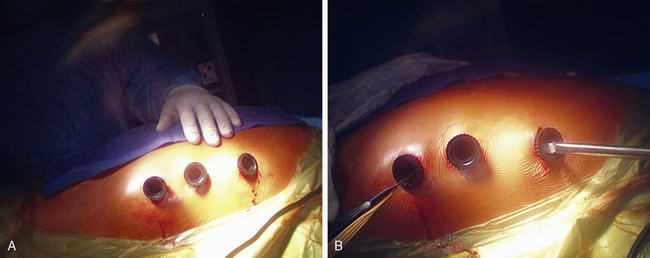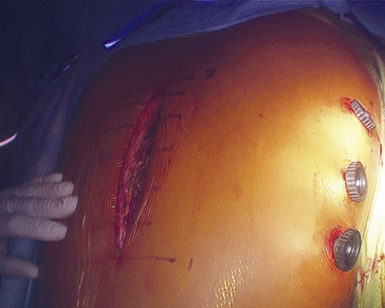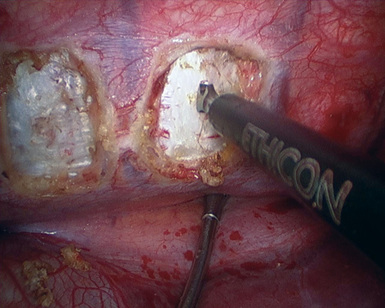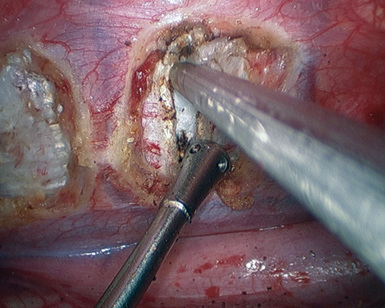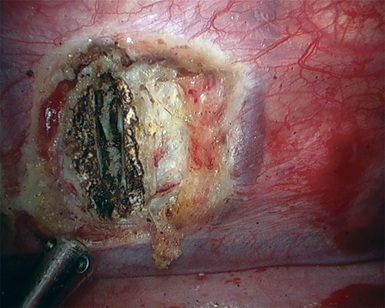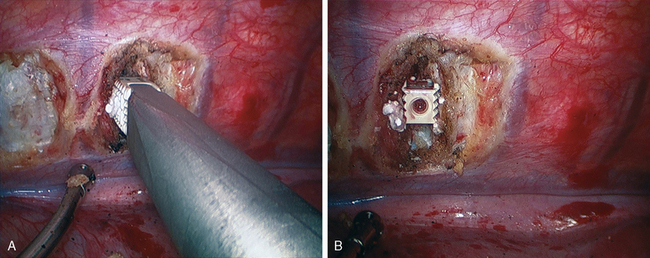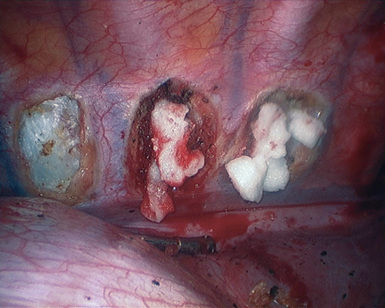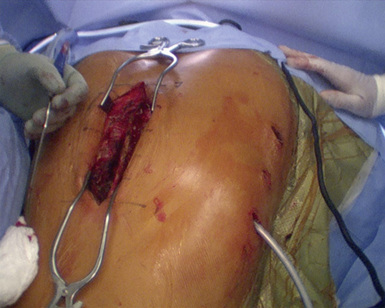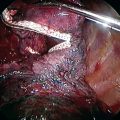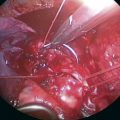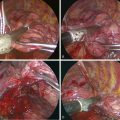CHAPTER 31 Thoracoscopic Approach to Spinal Deformities
Introduction
In December 1993, at Children’s Hospital Medical Center in Cincinnati, we began performing VATS for the anterior release of severe spinal deformities in children and adolescents. The benefits of this procedure include minimal invasiveness, better visualization and magnification, diminished postoperative pain and ventilatory compromise, reduced blood loss, decreased hospitalization, reduced health-care costs, improved wound care, and earlier return to prehospital activities with minimal shoulder dysfunction.1
Indications for Children and Adolescents
We have extended our indications to include all the procedures addressing the thoracic spine that were previously approached by thoracotomy.2
Approach to Minimally Invasive Exposure of the Thoracic Spine
Key Points
Video-Assisted Thoracic Spinal Surgery
Step 1. Setup and Patient Positioning
Step 2. Establishing Working Ports
Step 3. Visualization and Assessment
Step 4. Opening the Parietal Pleura
Step 5. Excision of the Thoracic Disk
1 Crawford A.H., Wolf R.K. Spinal deformities. In: Yim A.P., Hazler S.R., Izzat M.B., et al, editors. Minimal access cardiothoracic surgery. Philadelphia: Saunders; 2000:316-327.
2 Crawford A.H., Wolf R.K., Wall E.J., et al. Pediatric spinal deformity. In: Regan J.J., McAfee P.C., Mack M.J., editors. Atlas of endoscopic spine surgery. St Louis: Quality Medical Publishing, 1995.
3 Crawford A.H. Video-assisted thoracoscopy. In: Spine: State of the Art Reviews II. Philadelphia: Hanely & Belfus; 1997.
4 Mack M.J., Regan J.J., McFee P.C., et al. Video-assisted thoracic surgery for the anterior approach to the thoracic spine. Ann Thorac Surg. 1995;59:1102-1106.

